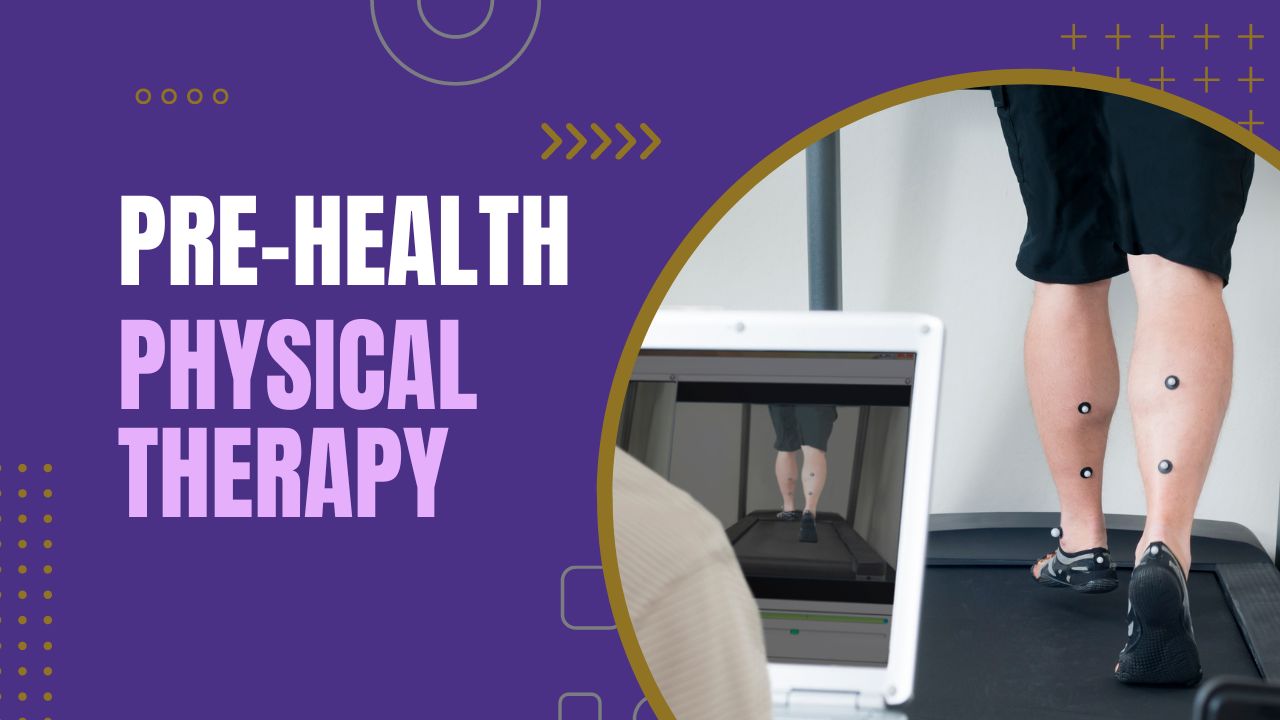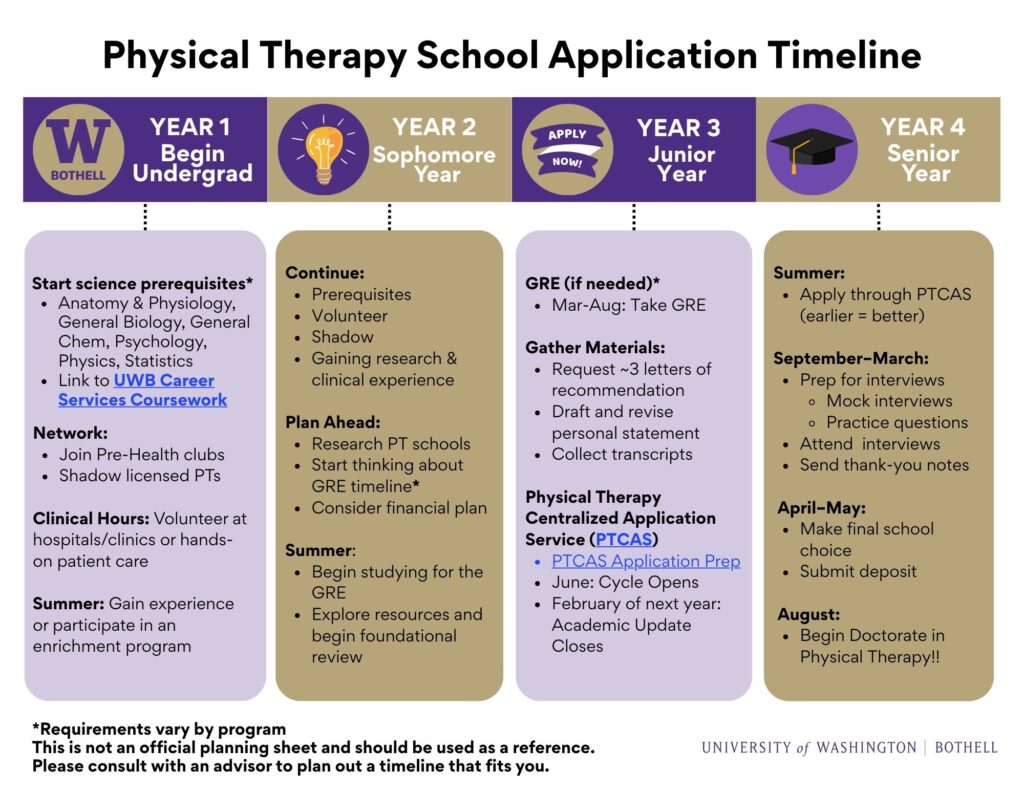Physical Therapy

Overview
Physical therapists work with individuals with movement or mobility problems in order to prevent, restore or resolve the dysfunctional condition. They find work in hospitals, private clinics, public schools, health maintenance organizations, nursing homes, rehabilitation centers and home health agencies. In order to become physical therapist, students complete a Doctor of Physical Therapy program (DPT). Preparing yourself to apply to the physical therapy program of your choice involves completing a bachelor’s degree, taking the necessary prerequisites required by DPT programs, getting good grades in all of your courses, gaining experience in the field (through work, volunteering, and shadowing), and taking the GRE. Many DPT programs require extensive observational exposure to physical therapists working in a broad variety of PT settings with different types of patients. Begin early.
As a pre-PT student, you can major in anything. There is not a specific major that all pre-PT students must have. DPT programs care that you do well in your major and your pre-PT coursework. Think about what interests you and what will best prepare you to be the best physical health provider you can be.
Application
Application Timeline
Requirements vary by program. This is not an official planning sheet and should be used as a reference. Please consult with an advisor to plan out a timeline that fits you.

- Start science prerequisites: Anatomy & Physiology, General Biology, General Chem, Psychology, Physics, Statistics – UWB Career Services Coursework
- Network: Join Pre-Health clubs, Shadow licensed PTs
- Clinical Hours: Volunteer at hospitals/clinics and gain hands-on patient care
- Summer: Gain experience or participate in an enrichment program – Applications due in January/February – UWB Getting Experience
- Continue: Prerequisites, Volunteer, Shadow, Gaining research & clinical experience
- Plan Ahead: Research PT schools, Start thinking about GRE timeline (if needed)
- Consider financial plan
- Summer: Begin studying for the GRE (if needed), Explore resources and begin foundational review
- March – August: Take GRE (if needed)*
- Gather Materials: Request ~3 letters of recommendation, Draft and revise personal statement, Collect transcripts
- Physical Therapy Centralized Application Service (PTCAS)
- PTCAS Application Prep
- June: Cycle Opens
- February of next year: Academic Update Closes
- Summer: Apply through PTCAS (earlier = better)
- September–March: Prep for interviews (Mock interviews, Practice questions), Attend interviews, Send thank-you notes
- April–May: Make final school choice, Submit deposit
- August: Begin Doctorate in Physical Therapy!!
Resources
Some PT schools will conduct interviews as part of the secondary application process. Students are advised to prepare for their interviews by scheduling a mock interview with the Health Professions & Natural Science Pathways Manager. Students should also become familiar with the type of questions that may be asked during their interview.